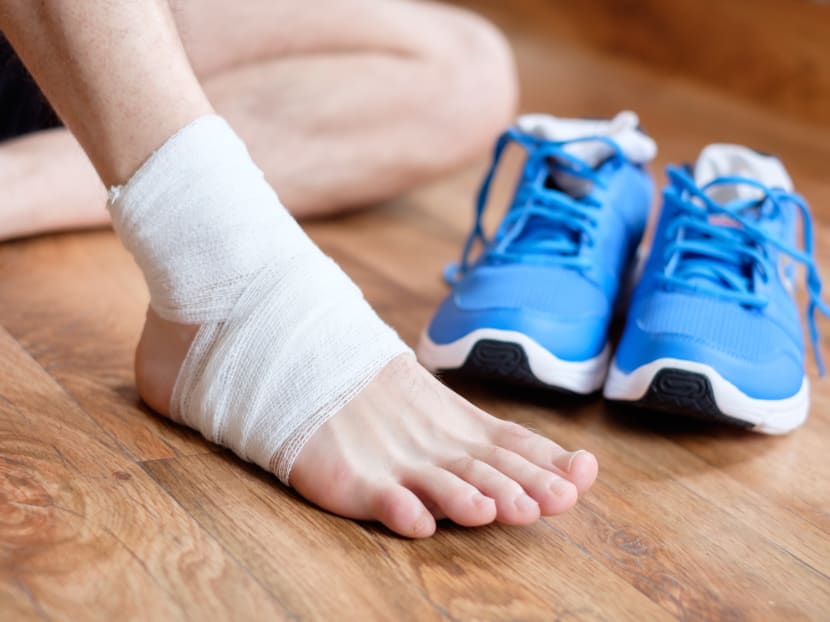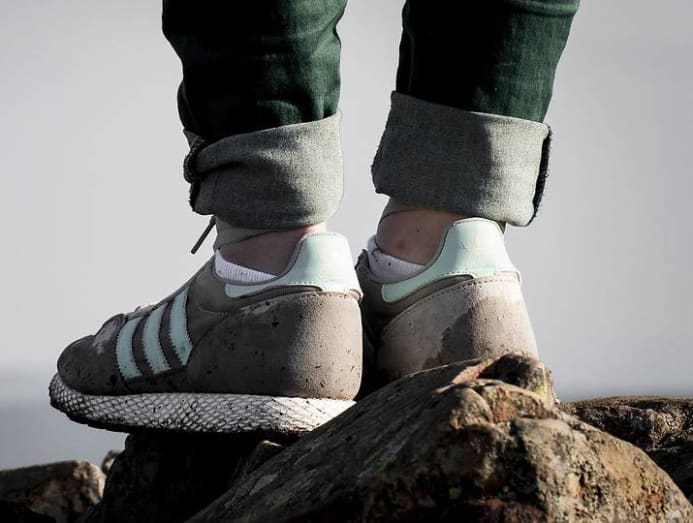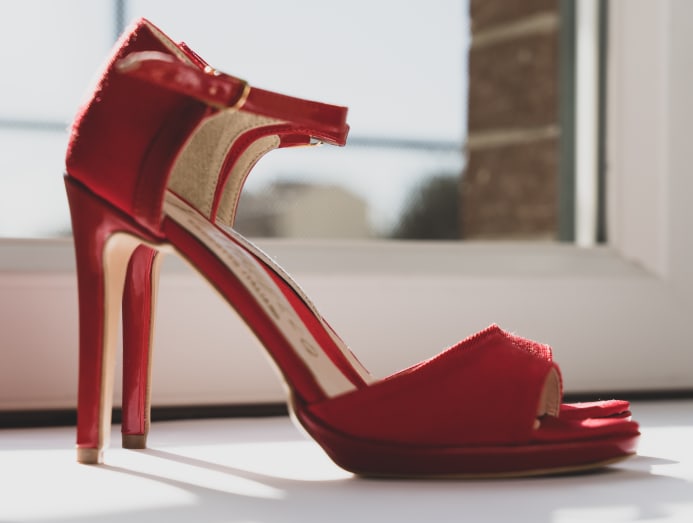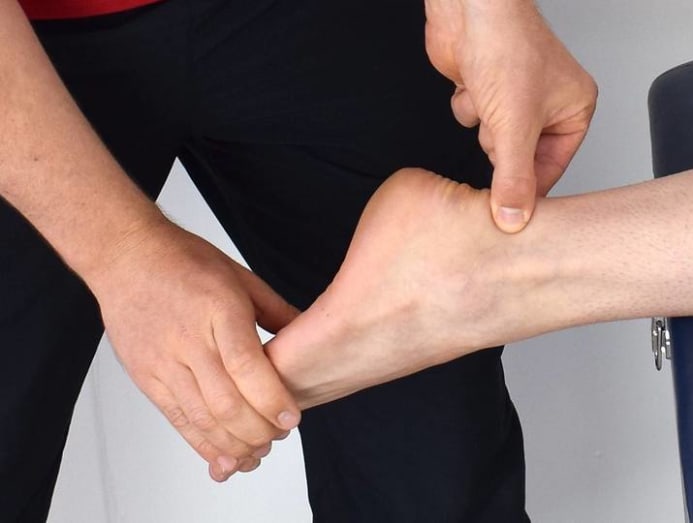Like to jog or wear heels? Here’s why you should take sprained ankles seriously
If it happens all the time, it might lead to osteoarthritis, say experts. Also: Why mere rest and some ice might not be the best remedy.

(Photo: iStock/tommaso79)
If you’ve sprained your ankle, you might find it a little less robust than before. You’re less sure-footed going down a high step or jogging on uneven terrain. You may even re-sprain the same ankle on subsequent occasions. Even more bad news: You are also more prone to osteoarthritis in the affected joint.
That chronic ankle instability – which 20 per cent to 30 per cent of patients experience – is the cause, according to Dr Kevin Koo, an orthopaedic surgeon with Mount Elizabeth Hospital. And it creates a domino effect: A less stable ankle is prone to sprains, and an ankle that keeps getting injured is more prone to osteoarthritis, he said.
But that’s not all that’s contributing to the issue. In a severe sprain, the cartilage covering the bones that make up the ankle joint can also be damaged, said Dr Joshua Li, the registrar of Changi General Hospital’s Sport & Exercise Medicine.
And you need the cartilage as it acts as a shock absorber. “Over time, due to the unequal loading in the joint, small cartilage defects can deteriorate into osteoarthritis.”

Of course, there’s also the damage at the time of the sprain to contend with. Usually, it’s the ligaments that are injured, said Dr Li. These collagen fibres are what hold the ankle joint in place and provide stability. When the ankle is sprained, the fibres are stretched and placed under tension. “If the forces are great enough, the collagen fibres are not able to hold themselves together and start to break apart, causing a tear in the ligament itself,” he said.
CAUSES AND TYPES OF ANKLE SPRAINS
If you’ve played football, basketball or volleyball before, you might already know that running, jumping, pivoting, cutting and other sudden, direction-changing movements are fair game for ankle sprains.
The most common type of ankle sprain involves the foot rolling inwards (lateral ankle sprain), said Dr Li. Other types of sprains can be sustained when the ankle is forced upwards and outwards (high ankle sprain), or forcefully rolled outwards (medial ankle sprain).
But you don’t have to play sports to hurt your ankle. “The lateral ankle sprain is also the sprain most commonly sustained while wearing heels or missing a step while going down the stairs,” said Dr Li. “In fact, it is the higher centre of gravity experienced while wearing heels that puts the ankle at increased risk for sprains, as compared to wearing flatter shoes.”

Other than the layperson assessment of the injury – "can you walk?" – ankle sprains are actually classified into three grades, said Dr Koo.
- Grade I: This is a mild sprain with little swelling or tenderness. There is no macroscopic tearing, and there is no loss of function, stability or motion.
- Grade II: This moderate sprain is caused by the partial macroscopic tear of the ligaments. You can expect moderate swelling, bruising and tenderness. Walking and putting weight on your injured ankle will cause moderate pain. You will also experience mild to moderate instability, and some loss of motion.
- Grade III: This is a severe sprain that comes from the complete rupture of the ligaments. Don’t expect to stand up on the ankle or walk because it will be too painful to do so. More reasons you won’t be walking: A significant loss of function, motion and stability. There will also be severe swelling, bruising and tenderness.
READ: Pro tips for high heel lovers: How to walk safely and elegantly in those stilettos
WHY AND WHEN DO YOU SEE A DOCTOR?
No need to hoof it to the doctor’s if it’s a minor sprain, right? After all, you’re just going to receive painkillers and muscle relaxants. Not accurate because beyond that, you can’t beat the doctor’s expertise in assessing “the integrity of the ligaments, feel for tenderness in the joint which may suggest cartilage injury, and also send the patient for relevant investigations such as X-rays or an MRI scan”, said Dr Koo.
And it goes beyond the initial examination. Rehabilitation, physiotherapy and even surgery may be prescribed if conservative treatment is found to have failed in follow-up sessions, said Dr Koo. For instance, surgical procedures such as the Arthroscopic Brostrum-Gould technique may be used to restore an ankle’s stability by repairing the lateral ligaments and associated cartilage injuries, he said.
According to him, the technique is an improvement of the open Brostrum-Gould procedure, which “uses a much larger incision (at least 2cm to 3cm) for the ligament repair”. “The arthroscopic or keyhole technique only uses a 2mm to 3mm incision.”
As for the difference in results, Dr Koo noted in his paper, which was published in the journal Foot And Ankle International, that patients who underwent the Arthroscopic Brostrum-Gould technique “had less pain after surgery and better clinical outcomes” than those who had the open version of the procedure in the first year.
But how do you know if you should go home and rest, or head for the clinic? “There is no recommended duration to wait before seeing a doctor for an ankle sprain,” said Dr Li, who advised that the decision to consult a doctor should instead be based on “certain signs and symptoms”.
These signs include an obvious bony deformity of the ankle or exposed broken bones. “Seek urgent medical attention as blood supply to the foot may be compromised,” said Dr Li. Other symptoms that definitely warrant a trip to the doctor’s include the ankle’s inability to bear weight, severe ankle swelling or bruising.
Added Dr Koo: “If the symptoms do not improve after two to five days of home treatment, one should consider booking an appointment to see a doctor”. The same applies if further sprains occur repeatedly thereafter, said Dr Li. “Medical advice should be sought for chronic ankle instability.”
DO ‘RICE’ AND RUBBING WITH A BOILED EGG HELP?
You may be familiar with the acronym RICE, which stands for rest, ice, compression and elevation, but this DIY post-sprain solution may not be as effective as many thought. “The evidence for these treatments is limited and overlooks non-urgent and long-term management of this common injury,” said Dr Li.
Instead, he highlighted two new acronyms: PEACE to address the immediate care needed; and LOVE for the subsequent management of soft tissue injuries as published in the British Journal Of Sports Medicine.
- P: Protection
- E: Elevation
- A: Avoid anti-inflammatories
- C: Compression
- E: Education
- L: Load
- O: Optimism
- V: Vascularisation
- E: Exercise
“Of note, while rest and protection are necessary in the early stage of recovery (the first few days), more emphasis has been placed on the importance of gradually returning to normal activities as guided by one’s tolerance for pain,” said Dr Li.

He also added that while icing and anti-inflammatory medication can help to reduce the pain and swelling in the acute phase, they can also reduce tissue healing in the long term. “As such, only a short course of icing (24 to 48 hours) and medication (≤1 week) should be recommended.”
Which brings us to the topic of painkillers. If you must take them, opt for non-steroidal anti-inflammatory drugs (NSAIDs) instead of paracetamol as the former can also reduce inflammation. But make sure you don’t have gastric issues, are not on blood-thinning medicines or have allergies to NSAIDs before taking them. Alternatively, you can try an NSAID cream to help reduce pain and swelling, said Dr Li.
READ: Pain, pain, go away: Why you shouldn't take over-the-counter painkillers lightly
What about your mother’s advice to rub the joint with a boiled egg. Does that help? “The underlying concept for the use of boiled eggs is heat therapy,” said Dr Li. “In the acute phase of injury, where we want to decrease swelling and inflammation, ice therapy instead of heat therapy is recommended in the first 24 to 48 hours after injury.”
WHY DO SPRAINED ANKLES STILL FEEL SORE MONTHS AFTER?
There are many reasons for the soreness months after the sprain, said Dr Li, which can be felt especially over the front and outer side of the joint. You may also notice the injured side of the ankle looking puffier than the non-injured side, as if the swelling doesn’t completely subside.
“When ligaments are sprained, they heal by scarring. These scarred ligaments can be thicker than healthy ligaments, hence, it can appear more swollen over the outer side of the ankle,” said Dr Li.
As for the soreness, the scarred ligaments are thick and sensitive, and can be caught in the joint space as the ankle moves during walking, he explained. “Overcompensation from the other tendons around the ankle may also result in strain and add to the soreness.”

To really get to the bottom of the soreness or pain, you’ll need a doctor’s assessment and possibly, an MRI scan to detect cartilage defects, especially if there is persistent pain and swelling arising from inside the joint, said Dr Li. “Surgery to repair cartilage defects or remove inflamed tissues can be done if conservative treatment fails.”
Otherwise, physiotherapy may be all that’s needed to strengthen the muscles around the ankle and promote flexibility in the later stages.
“It is not too late to see a doctor even at this stage as relevant investigations and treatment can still be offered,” said Dr Koo.





